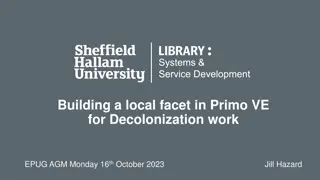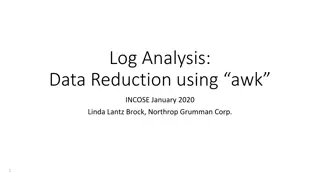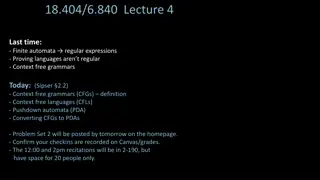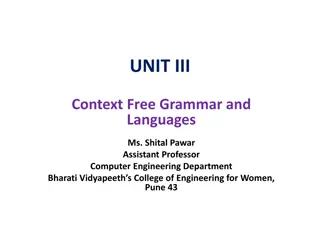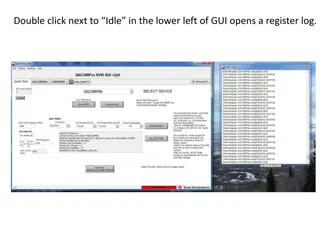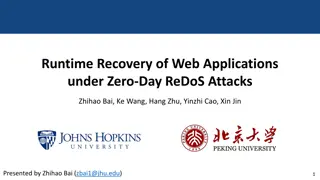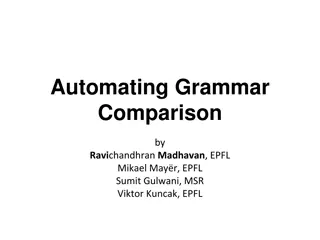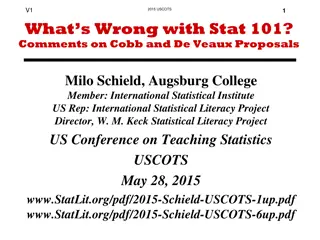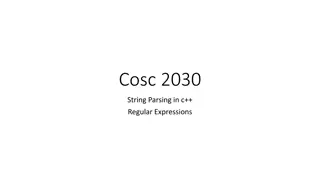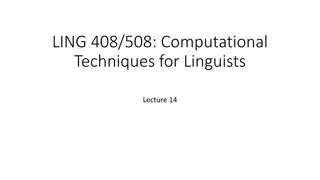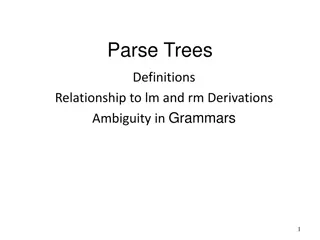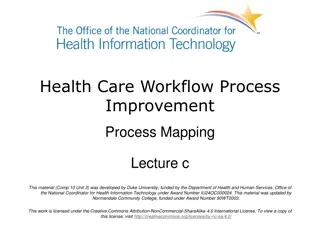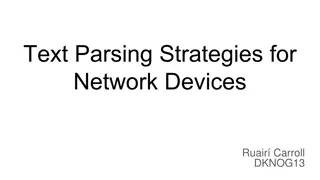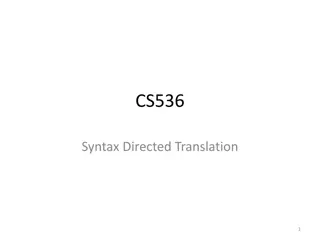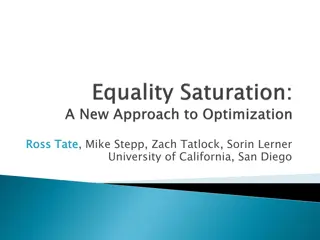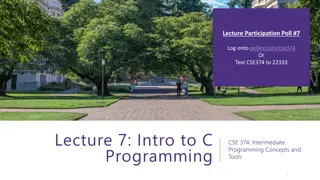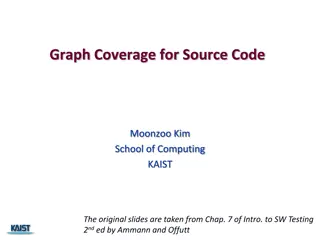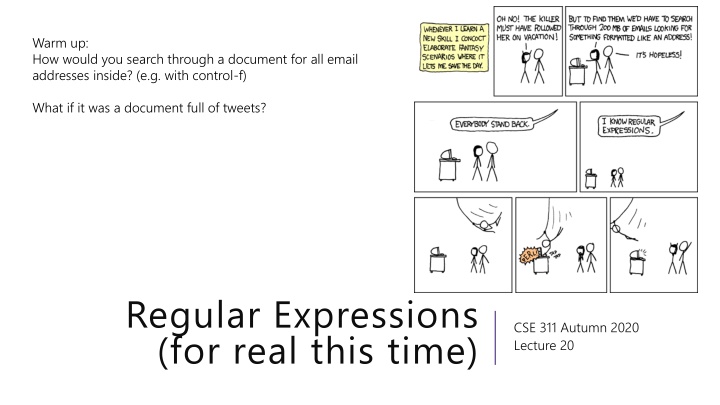
Searching for Email Addresses in Text Documents Using Regular Expressions
Learn how to use regular expressions to efficiently search for email addresses within text documents. Discover strategies for handling documents full of tweets, extracting valuable information, and optimizing search processes. Enhance your document processing skills with practical methods for identifying email addresses accurately and effectively.
Download Presentation

Please find below an Image/Link to download the presentation.
The content on the website is provided AS IS for your information and personal use only. It may not be sold, licensed, or shared on other websites without obtaining consent from the author. If you encounter any issues during the download, it is possible that the publisher has removed the file from their server.
You are allowed to download the files provided on this website for personal or commercial use, subject to the condition that they are used lawfully. All files are the property of their respective owners.
The content on the website is provided AS IS for your information and personal use only. It may not be sold, licensed, or shared on other websites without obtaining consent from the author.
E N D
Presentation Transcript
Warm up: How would you search through a document for all email addresses inside? (e.g. with control-f) What if it was a document full of tweets? Regular Expressions (for real this time) CSE 311 Autumn 2020 Lecture 20
Midterm Post Mortem That did not go as I planned. I estimated most students would be able to finish in 3 hours or so. From the results of the survey: 25% of students said they took 5 hours or less 50% of students said they took 7 hours or less 75% of students said they took 9 hours or less. And there was a long tail in those last percentiles. Mean was a little below 8.
Midterm Post Mortem Why was I off by a factor of ~3? Standard procedure is to have a subset of the TAs take a draft of the exam and time themselves. And double or triple the time to estimate how long is fair for an in-person exam. 9 TAs took a version of the exam. 4 took a harder initial version, all finished in 1.5 hours or less 5 took (essentially) the final version, all finished in 55 minutes or less. Normal math 3 hours should be enough?
Why the normal math didnt work (hypotheses) TAs had abnormal unfair advantages to make them faster: TAs had abnormal unfair advantages to make them faster: Problem 1 used predicates with domain restriction built-in Prior 311 iterations have used these frequently; it was in our review materials, and once or twice in section, but wasn t a focus on the homework. So the TAs were even more familiar than you were. Problem 3 was a combination of sets and a sneak peak at something coming next week. I was expecting you to process something new they were processing something old. I told TAs to take under test conditions you weren t under test conditions.
Why the normal math didnt work (hypotheses) Math built on expectation of students doing significant studying Math built on expectation of students doing significant studying beforehand. beforehand. You probably didn t study for an open book exam the way students usually do for a closed book one. Particularly since we delayed the HW5 deadline so close to the midterm. In an exam setting, when you don t get a problem you skip it and throw In an exam setting, when you don t get a problem you skip it and throw whatever down with 3 minutes left. whatever down with 3 minutes left. In the take-home setting, you might take an extra 2-3 (or 11) hours to get one more good step/a little more progress/etc.
Sooooooooooooowhat are we doing about the final? I won t give you an exam that s much longer than the midterm was TAs should still be able to finish in an hour-or-so And I ll tell you the TA time instead of estimating your time. But we ll extend the window that you re allowed to work in (If a significant portion of the class is going to take 8+ hours, I want you to have that time to do it even if you have other work to do finals week). Exact window TBD have to discuss with TAs to make sure we can get everything graded in time for me to turn in grades.
Want to talk to me about grades? https://calendly.com/robbieweber/311grade?month=2020-11 Will take you to a Calendly page. I have 15 minute slots most of the day tomorrow. Reserve an appointment there and we can talk tomorrow. We won t have exam grades yet, but I ll have a sense of how most of you did.
Course Outline Symbolic Logic (training wheels; lectures 1-8) Just make arguments in mechanical ways. Set Theory/Arithmetic (bike in your backyard; lectures 9-19) Models of computation (biking in your neighborhood; lectures 19-30) Still make and communicate rigorous arguments But now with objects you haven t used before. -A first taste of how we can argue rigorously about computers. This week: regular expressions and context free grammars understand these simpler computers After Thanksgiving: what these simple computers can do Last week of class: what simple computers (and normal ones) can t do.
Regular Expressions I have a giant text document. And I want to find all the email addresses inside. What does an email address look like? [some letters and numbers] @ [more letters] . [com, net, or edu] We want to ctrl-f for a pattern of strings pattern of strings rather than a single string
Languages A set of strings is called a language. language. is a language the set of all binary strings of even length is a language. the set of all palindromes is a language. the set of all English words is a language. the set of all strings matching a given pattern pattern is a language.
Regular Expressions Every pattern automatically gives you a language . The set of all strings that match that pattern. We ll formalize patterns via regular expressions ? is a regular expression. The empty string itself matches the pattern (and nothing else does). ? is a regular expression, for any ? (i.e. any character). The character itself matching this pattern. is a regular expression. No strings match this pattern.
Regular Expressions Basis: ? is a regular expression. The empty string itself matches the pattern (and nothing else does). is a regular expression. No strings match this pattern. ? is a regular expression, for any ? (i.e. any character). The character itself matching this pattern. Recursive If ?,? are regular expressions then (? ?) is a regular expression matched by any string that matches ? or that matches ? [or both]). If ?,? are regular expressions then ?? is a regular expression. matched by any string ? such that ? = ??, ? matches ? and ? matches ?. If ? is a regular expression, then ? is a regular expression. matched by any string that can be divided into 0 or more strings that match ?.
Regular Expressions (? ??) 0 0 1 1 0 0 1
Regular Expressions (? ??) Corresponds to {?,??} 0 0 1 1 Corresponds to {001,011} all length three strings that start with a 0 and end in a 1. 0 Corresponds to {?,0,00,000,0000, } 0 1 Corresponds to the set of all binary strings.
More Examples 0 1 0 1 0 1 00 11 0 1 Fill out the poll everywhere for Activity Credit! 00 11 Go to pollev.com/cse311 and login with your UW identity Or text cse311 to 22333
More Examples 0 1 All binary strings 0 1 All binary strings with any 0 s coming before any 1 s 0 1 00 11 0 1 This is all binary strings again. Not a good representation, but valid. 00 11 All binary strings where 0s and 1s come in pairs
More Practice You can also go the other way Write a regular expression for the set of all binary strings of odd length Write a regular expression for the set of all binary strings with at most two ones Write a regular expression for strings that don t contain 00
More Practice You can also go the other way Write a regular expression for the set of all binary strings of odd length 0 1 00 01 10 11 Write a regular expression for the set of all binary strings with at most two ones 0 1 ? 0 1 ? 0 Write a regular expression for strings that don t contain 00 01 1 (0 ?) (key idea: all 0s followed by 1 or end of the string)
Practical Advice Check ? and 1character strings to make sure they re excluded or included (easy to miss those edge cases). If you can break into pieces, that usually helps. nots are hard (there s no not in standard regular expressions But you can negate things, usually by negating at a low-level. E.g. to have binary strings without 00, your building blocks are 1 s and 0 s followed by a 1 01 1 (0 ?) then make adjustments for edge cases (like ending in 0) Remember allows for 0copies! To say at least one copy use ?? .
Regular Expressions In Practice EXTREMELY useful. Used to define valid tokens (like legal variable names or all known keywords when writing compilers/languages) Used in grep to actually search through documents. Pattern p = Pattern.compile("a*b"); Matcher m = p.matcher("aaaaab"); boolean b = m.matches(); ^ start of string $ end of string [01] a 0 or a 1 [0-9] any single digit \. period \, comma \- minus . any single character ab a followed by b (AB) (A B) (a|b) a or b a? zero or one of a (A ) a* zero or more of a A* a+ one or more of a AA* e.g. ^[\-+]?[0-9]*(\.|\,)?[0-9]+$ General form of decimal number e.g. 9.12 or -9,8 (Europe)
Regular Expressions In Practice When you only have ASCII characters (say in a programming language) | usually takes the place of ? (and perhaps creative rewriting) take the place of ?. E.g. 0 ? 1 10 is 0?(1|10)*
A Final Vocabulary Note Not everything can be represented as a regular expression. E.g. the set of all palindromes is not the language of any regular expression. Some programming languages define features in their regexes that can t be represented by our definition of regular expressions. Things like match this pattern, then have exactly that substring So before you say ah, you can t do that with regular expressions, I learned it in 311! you should make sure you know whether your language is calling a more powerful object regular expressions . But the more fancy features beyond regular expressions you use, the slower the checking algorithms run, (and the harder it is to force the expressions to fit into the framework) so this is still very useful theory. substring appear later.
What Cant Regular Expressions Do? Some easy things Things where you could say whether a string matches with just a loop {0?1?:? 0} The set of all palindromes. And some harder things Expressions with matched parentheses Properly formed arithmetic expressions Context Free Grammars can solve all of these problems!
Context Free Grammars A context free grammar (CFG) is a finite set of production rules over: An alphabet of terminal symbols A finite set ?of nonterminal symbols A start symbol (one of the elements of ?) usually denoted ?. A production rule for a nonterminal ? ? takes the form ? ?1?2 |?? Where each ?? ? is a string of nonterminals and terminals.
Context Free Grammars We think of context free grammars as generating 1. Start from the start symbol ?. 2. Choose a nonterminal in the string, and a production rule ? ?1?2 |?? replace that copy of the nonterminal with ??. 3. If no nonterminals remain, you re done! Otherwise, goto step 2. generating strings. A string is in the language of the CFG iff it can be generated starting from ?.
Examples ? 0?0 1?1 0|1|? ? 0?|?1|? ? ? |??|?

